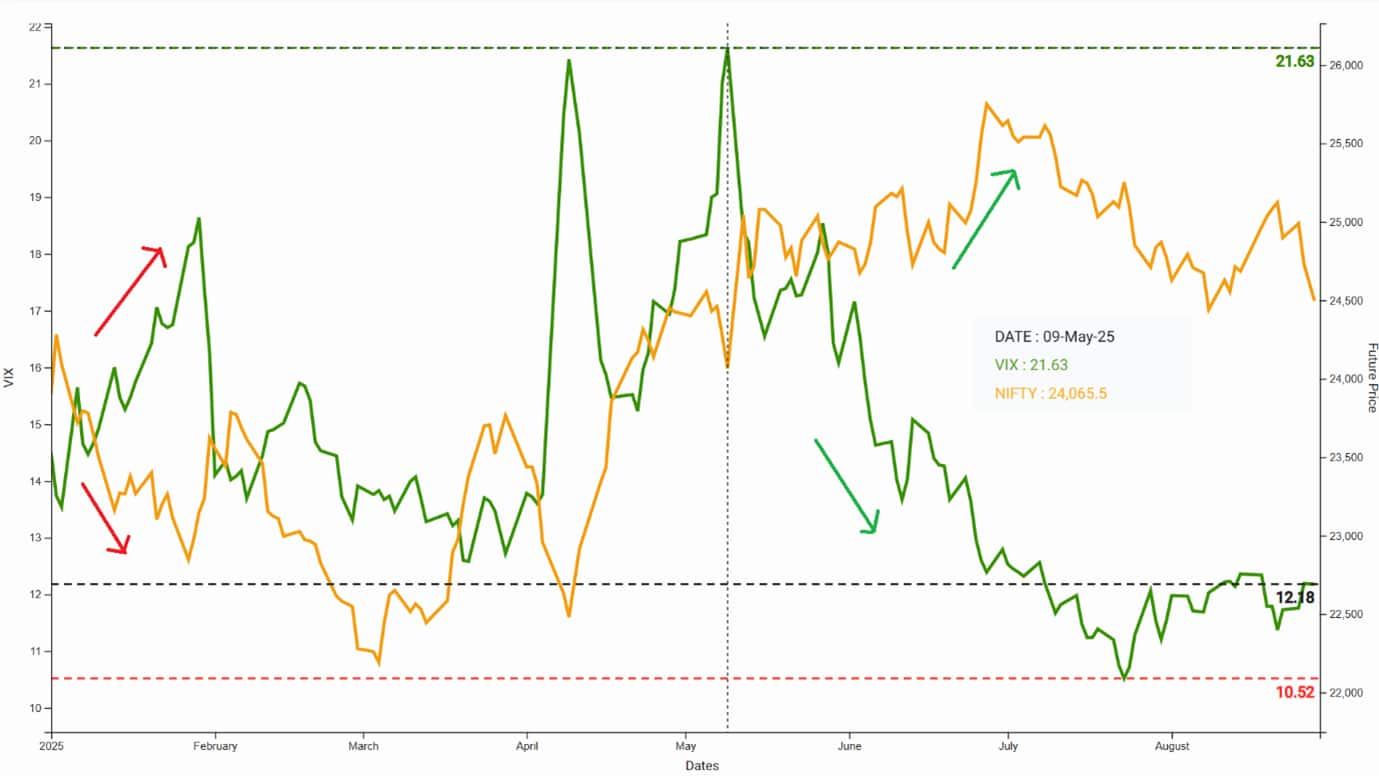



Equity market is everything about risk. The risk of owning a business via equity brings the reward that is bigger than the one earned traditionally in safe assets. Same is priced into the equity options also.
The risk parameter input into option pricing is that of volatility. In simple terms volatility can be defined as momentum. This volatility input has its own analytical value because it is not past volatility but expected volatility for the rest of the expiry.
Typically, an analyst like me would be interested in what is the market view on expected volatility. Easiest way to find that out is via back calculating Volatility in Option pricing formula as we already know what the Premium is in the market.
Before we jump into the use of this “Implied” volatility (implied from the option premium), let us understand what India VIX stands for. If we were to calculate roughly the expected volatility of Nifty indicated via Options, we would use the value of India VIX.
The calculation is inherited and tested for decades. India VIX is a solid proxy of Implied Volatility of Nifty. It commands such importance because the calculation of implied volatility is a difficult task, while India VIX is available publicly with NSE.
2 more points from here will help us identify the best use of the India VIX.
#1 Risk Index:Going back to the very beginning it is the volatility (momentum) that moves the equity in our favour bringing the good returns. However, it is the same volatility that moves equity down as well, right? So, in other words volatility is the risk element in equity.
Index of such forward looking volatility can thus be termed as risk index. Higher the index, higher will be the possibility of downward move and higher will be the risk of loss.
Having established the risk element of the risk index. This should come naturally to us that more the risk index, worse the market. However, let us drill it down a bit to understand the reason.
Naturally, anything when being built takes a longer time than being destructed. Hence, it is safe to say that slower momentum can be naturally associated with the rise and faster momentum can be associated with the fall.
In other words, falling India VIX (risk index) can be used to set an expectation of a rise. On the other hand, falling India VIX can be used to expect a fall. Let us see if what we are saying is what actually plays out.

The 2 sets of arrows clearly show what happens with rising India VIX (red arrows) and what happens with falling India VIX (green arrows).
With the 2 points made, I am just adding 1+1=2 that will bring us to show how India VIX has best view of the fear.
The left side scale is of India VIX. Unlike NIFTY, on the right-hand side scale, India VIX moves in range. But within the range it does have a trend. Falling trend in India VIX is an easy indication (view) into expecting falling fear. The opposite is also true.
Disclaimer: The views and investment tips expressed by experts on Moneycontrol.com are their own and not those of the website or its management. Moneycontrol.com advises users to check with certified experts before taking any investment decisions.
Discover the latest Business News, Sensex, and Nifty updates. Obtain Personal Finance insights, tax queries, and expert opinions on Moneycontrol or download the Moneycontrol App to stay updated!
Find the best of Al News in one place, specially curated for you every weekend.
Stay on top of the latest tech trends and biggest startup news.